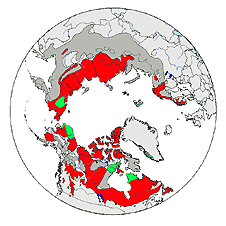There’s an extremely intriguing article in Sunday’s North Platte Telegraph. North Platte is in Nebraska, and the story is bylined Kearney, which is in the same state. Nebraska is home to the Pawnee people, ((Although actually the Pawnee Nation seems to be in Oklahoma. I don’t quite get it.)) and the article is basically an account of a tribal function held last Friday “to welcome Pawnee tribal members back to their ancestral lands.” During the luncheon, Tom Hoegemeyer, described as a geneticist “whose family operates a large Nebraska seed corn company” and who “is chairman of a U.S. group working to enhance U.S. germplasm of corn,” gave a keynote in which, among other things, he said that
“We’ll do everything in our power to address the Pawnee corn.”
Pawnee corn is an issue because
Attempts to grow the tribe’s traditional varieties have had mixed results. Some seeds will not germinate, EchoHawk said.
EchoHawk is
the Pawnee’s director of education and is one of three women known as the “corn sisters” because they are attempting to revive the strains of corn the tribe grew on its ancestral lands in Nebraska.
As I say, intriguing. And fascinating. I want to know more. What’s wrong with the Pawnee’s corn, exactly? Stay tuned.
Extra information: More on the rescuing of Pawnee corn and Pawnee corn pix.
